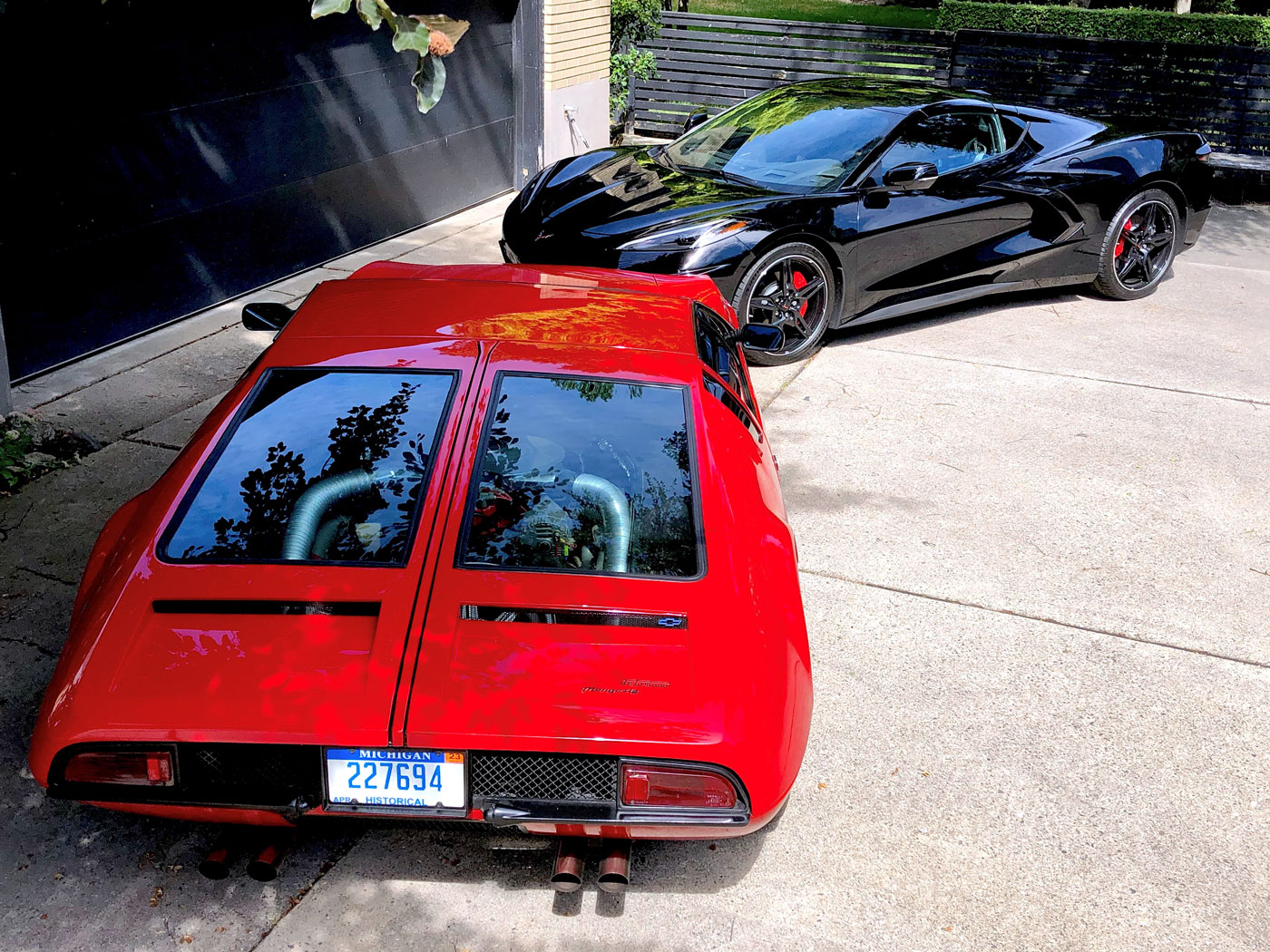
The Mangusta has a wonderful Italian driving spirit and the C8 Corvette is built with the force of American enthusiasm for performance.
By Dick Ruzzin
THE MID-ENGINE CONCEPT AS ADDRESSED BY DE TOMASO AND CHEVROLET
The Mangusta platform potential was never realized, it came out before it was fully developed and production was stopped after 401 cars were built. That was done so that De Tomaso and Ford could start building the Pantera, mid-engine also but a totally different car. The Mangusta’s P-70 racing chassis was created by Alessandro de Tomaso and Carroll Shelby, but the iconic design by Giorgetto Giugiaro is so visually powerful that their contributions to the creation of the car have been forgotten.
Coming over fifty years later the mid-engine C8 Corvette Stingray has a long and admirable rear drive heritage and an expansive mid-engine future. The C8 potential is already packaged into its new cast aluminum chassis. In 1959 even before the Mangusta was created some at Chevrolet were already seeing a future mid-engine platform for the Corvette…. “Some day”.
The Corvette mid-engine development process started in 1959 with the Chevrolet Engineering Research Vehicle (CERV), as created by Zora Arkus Duntov. With this car his idea of a “someday” future mid-engine Corvette was revealed. It was a single seater with a mid-engine platform that included four wheel drive. Much testing was done on the car with multiple engine changes and some testing even by Chaparral Cars of Texas. GM was gathering data but the concept was too big a leap into the unknown for a car that was selling well and establishing a name for itself in racing. To the engineers the culture change would be daunting, the mid-engine concept was a dream that was just starting to emerge in racing and from there mid-engine street cars would obviously be the next step.
CHEVROLET IN 2020
A rear wheel drive engineering culture is very different than a mid-engine culture. Chevrolet made the transition from a very successful rear wheel drive platform, the C7, to an instantly competent and expandable mid-engine platform in the C8. That has already been demonstrated successfully by their racing program. The final rear wheel drive Corvette was so successful that it was able to outperform some very expensive mid-engine cars. In spite of that Chevrolet management had felt for years that the rear drive platform was reaching its limit, requiring a move to the mid-engine concept to raise the performance horizon for the Corvette. The C8 will also be built with right hand drive, signaling that Chevrolet has global sales expectations leveraged by its racing success.
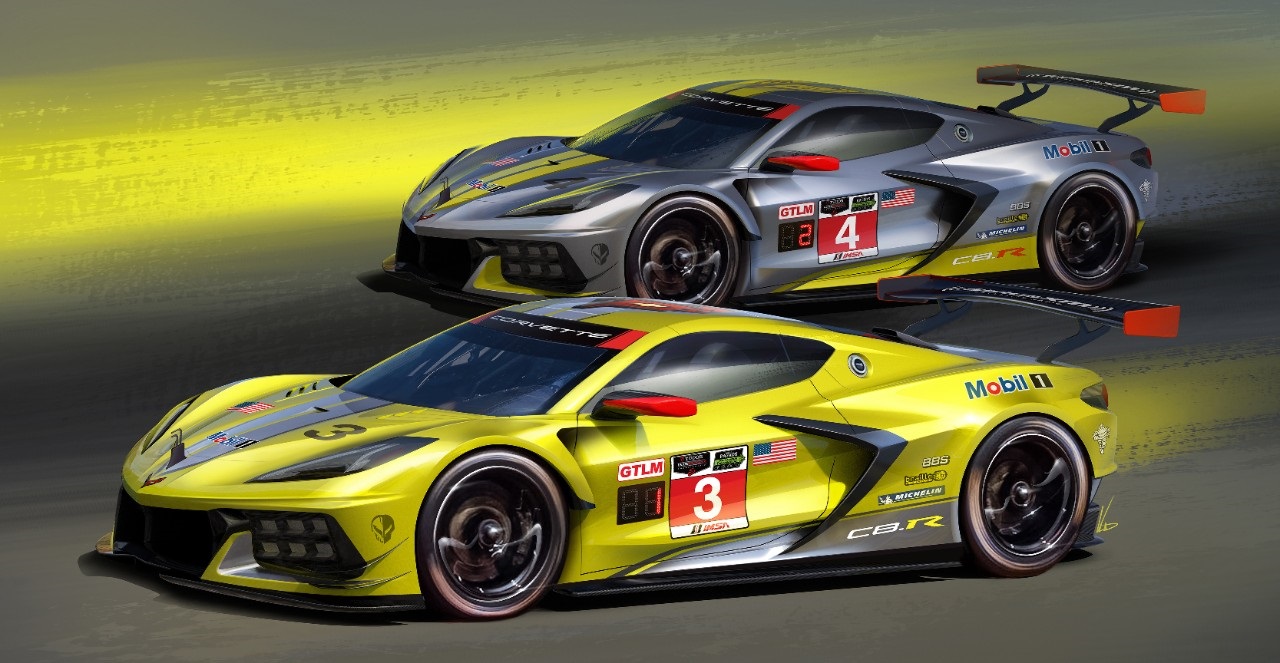
To really understand the design of the C8 Corvette you have to see and hear the racecars in motion. Corvette racing has paved the way for global sales. A GM Design sketch showing the new silver livery on the No. 4 car, joined by a traditional yellow livery on the No. 3 car. Courtesy GM Media
Examining the C8 closely will show that Chevrolet has spent money on the C8 that is beyond it’s traditional Corvette content. Clearly it matches its history for offering a lot of car for the money but it has also included a combination of architecture, detail and content that is exceptional and beyond it’s norm. With a uniquely engineered high pressure cast six piece aluminum chassis and a best of the best in house developed eight speed transmission the C8 is positioned for technical advancement to match any car in the business. There is no doubt that the C8 Corvette Stingray is challenging the mid-engine star cars of Europe and it is likely better positioned. Behind the car is world class GM powertrain and engine technology and a culture that has demonstrated a very high level of dynamic competency. The test numbers at Nurburgring show that.
DRIVING THE 1969 DE TOMASO MANGUSTA
Approaching the Mangusta, due to its mid-engine proportions and skillfully executed timeless design, it still looks modern and dramatic. What makes the car so beautiful is the masterful and artistic execution of the sheer surfaces. It is very low and small with a sporty and elegant character designed in by a young Giorgetto Giugiaro. He created the car as a race car for the street. He designed both interior and exterior, on his kitchen table, and it was introduced in 1966.

The Mangusta interior, designed as a racecar of the time with eight VEGLIA BORLETTI guages and a much imitated steering wheel built by FERRARA.
You sit very low in the Mangusta, five inches lower than the C8 Corvette. The interior is harmonic with the exterior, simple, purposeful and tight since the car has a very short wheelbase. The seats are typical for the late sixties not nearly offering the support of those in the new Corvette. The instrument panel is flat and covered with black leather and suede. On it are eight beautifully designed black VEGLIA BORLETTI gauges and a line of toggle switches. In front of you is one of the most beautiful steering wheels ever designed, it has been much imitated and is a piece of artwork. Behind you, a thick piece of glass that helps keep engine sound from entering the passenger compartment. The Corvette has a thick glass too, with a specially developed seal around it to keep sound out of the interior.
Mangusta seating is compromised by the very large front wheel wells so the pedal box is a bit to the right and you sit at a slight angle. Normally you are not aware of the angled seating position as you become used to it easily. You are aware of it when you have been away from the car for a long period of time. The car is wide on the inside but tight fore and aft, like a racecar
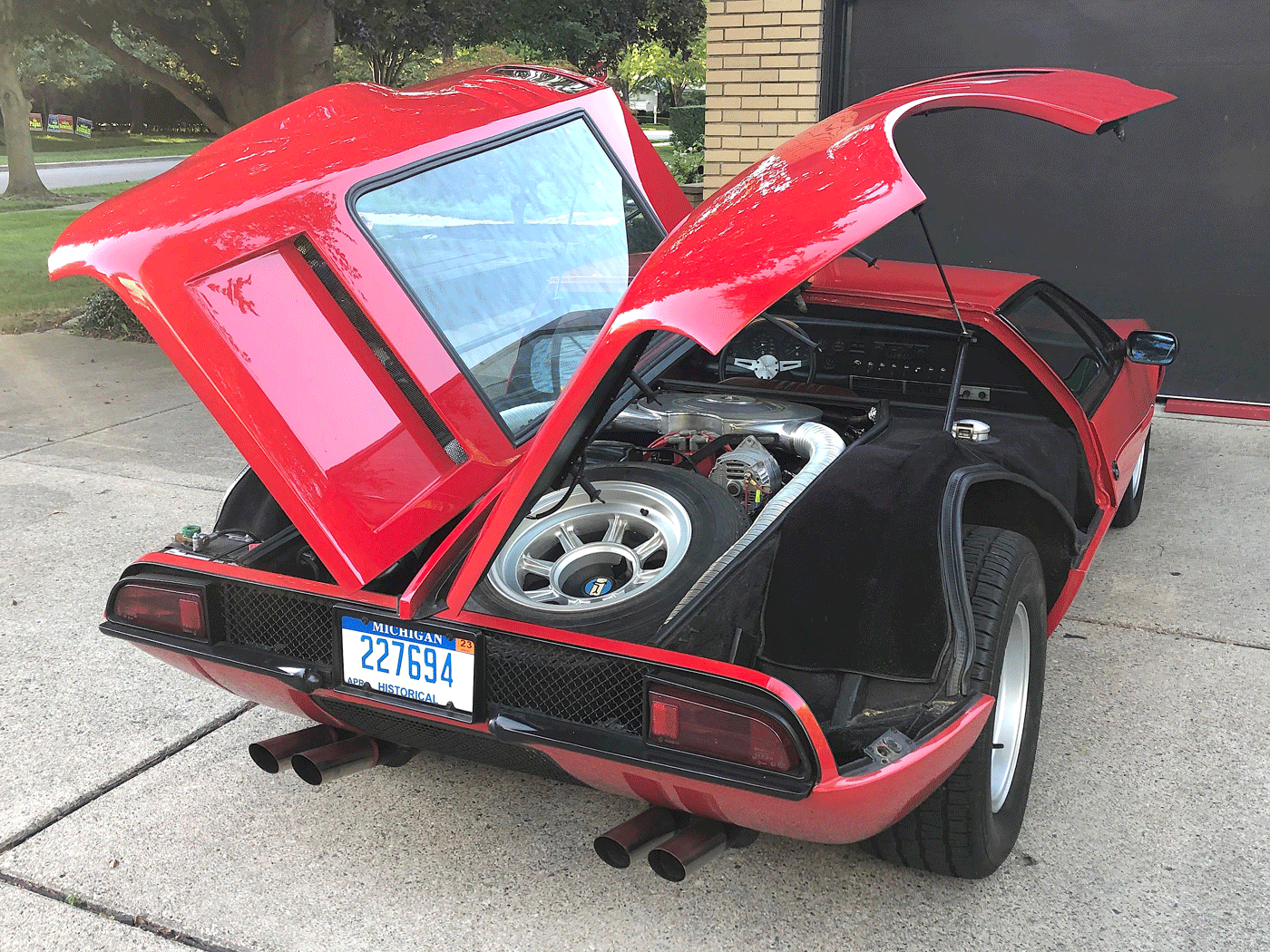
Good engine accessibility is always difficult to achieve on a mid-engine car. The solution is unique to the Mangusta, so unique that it has never been done on anther production car.
Driving the car is really fun. The rack and pinion steering is very tight and the throttle response is crisp, it is noisy at low speeds but it quiets down on the freeway. The suspension is typical of race cars of the early sixties: A arms and Heims joints front and rear with minimal wheel travel. The chassis is very sensitive to adjustment but once dialed in you will get a driving experience that is very precise. It tracks straight when accelerating or braking. The Mangusta has a very low transaxle so care has to be taken for speedbumps and other road hazards. The ZF five speed transaxle and the Girling disc brakes are racing components used at the time in Grand Prix cars and the Ford GT40. De Tomaso was a racer too and it is easily seen in the Mangusta.
DRIVING THE 2020 C8 CORVETTE
The Corvette looks dramatic. It gets a lot of looks and waves, even thumbs up from Mustang drivers. It appears almost like a quick sketch. The sculptural execution of the complex surfaces are masterful and the surface quality of the glass is the best that I have ever seen. The interior design is simple and beautiful, exotic yet very functional. Entering you sit behind two large screens, the one in front of the square steering wheel immediately presents a short video, an X-ray side view vision of MY car, black with no spoiler! It evolves into a beautiful illustration of the car on a black background. Then one of the two electronically adjustable instruments appear with all the information that I have decided to have available. All control settings are electronically adjustable and memorized by the car. Several seat functions, steering wheel, fore and aft as well as up and down, mirrors, HVAC, radio station and volume.
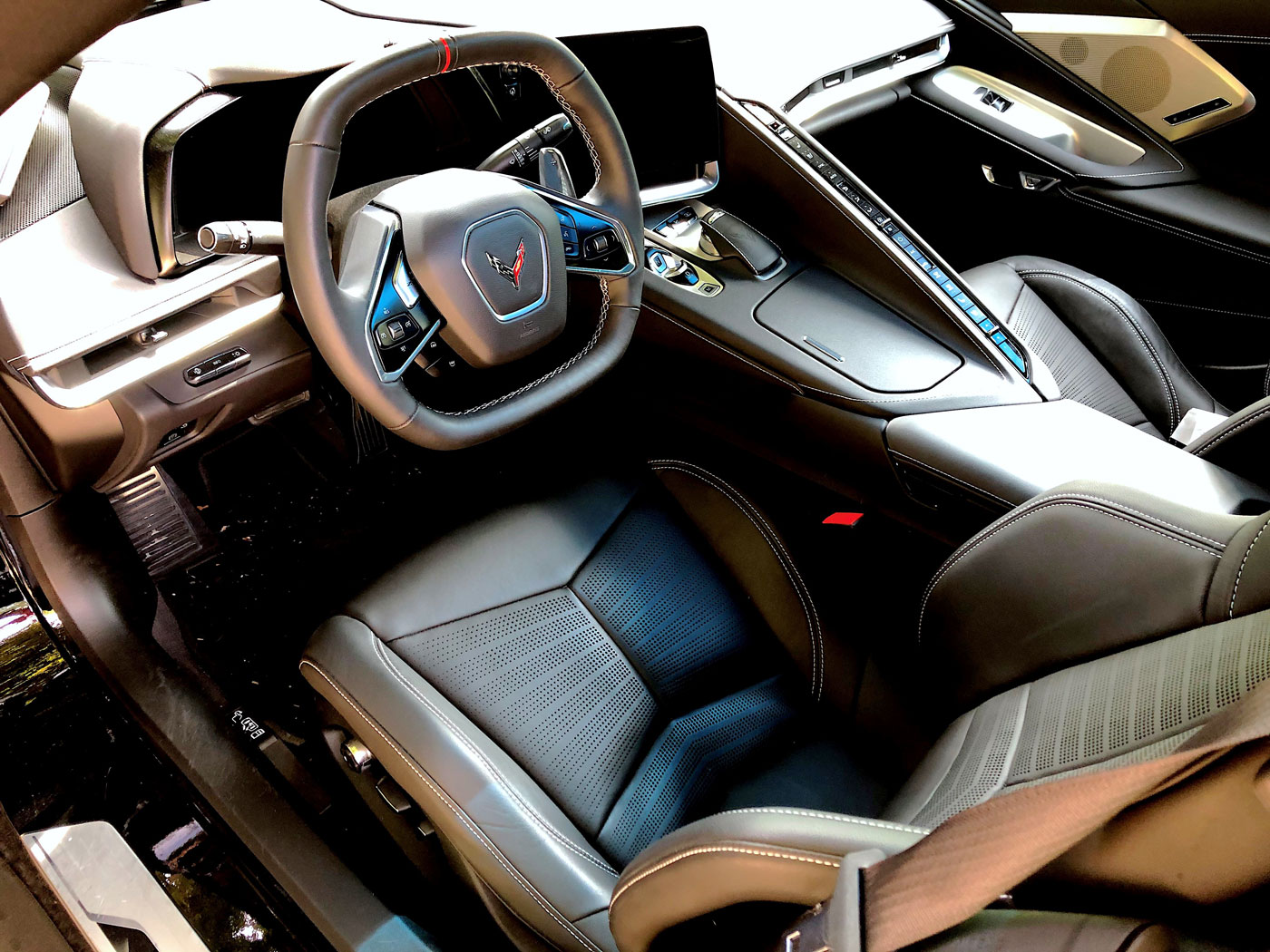
The C8 Corvette interior design combines an exotic theme with a high level of functionality and quality. With more interior space than any other Corvette, the C8 will also be built with right hand drive to address the global market.
It takes some serious driving and a little time to get everything set but once you do, driving the car is like sitting in your most comfortable chair at home. Balanced, relaxing, solid and stable, the car is quiet and the steering requires very little correction.
An outstanding part of the car to me is the interior design; obviously a lot of attention went into the driving position and the seats. The interior is clearly designed around the driver. There is support for your elbows on both sides and the square steering wheel is a no brainer. You immediately adjust to it and the corners are in just the right place to help you grip the wheel for low speed turns when you feel the car rotate around you. The new C8 Corvette has five electronic driving programs to choose from, ‘Weather’ to ‘Track’ as well as one added program that allows you to configure the cars drive train, the ride and handling exactly to your liking. Plus, it is quickly activated by the ‘Z’ button on the steering wheel that unleashes your favorite combination for ‘special occasions.’
Be very careful when entering a freeway, suddenly you see 100MPH flashing by on the speedometer! Then, cruising at 1300RPM in 8th gear at 75 MPH the 490HP engine is smoothly running on 4 cylinders and giving you well over 30MPG… Amazing!
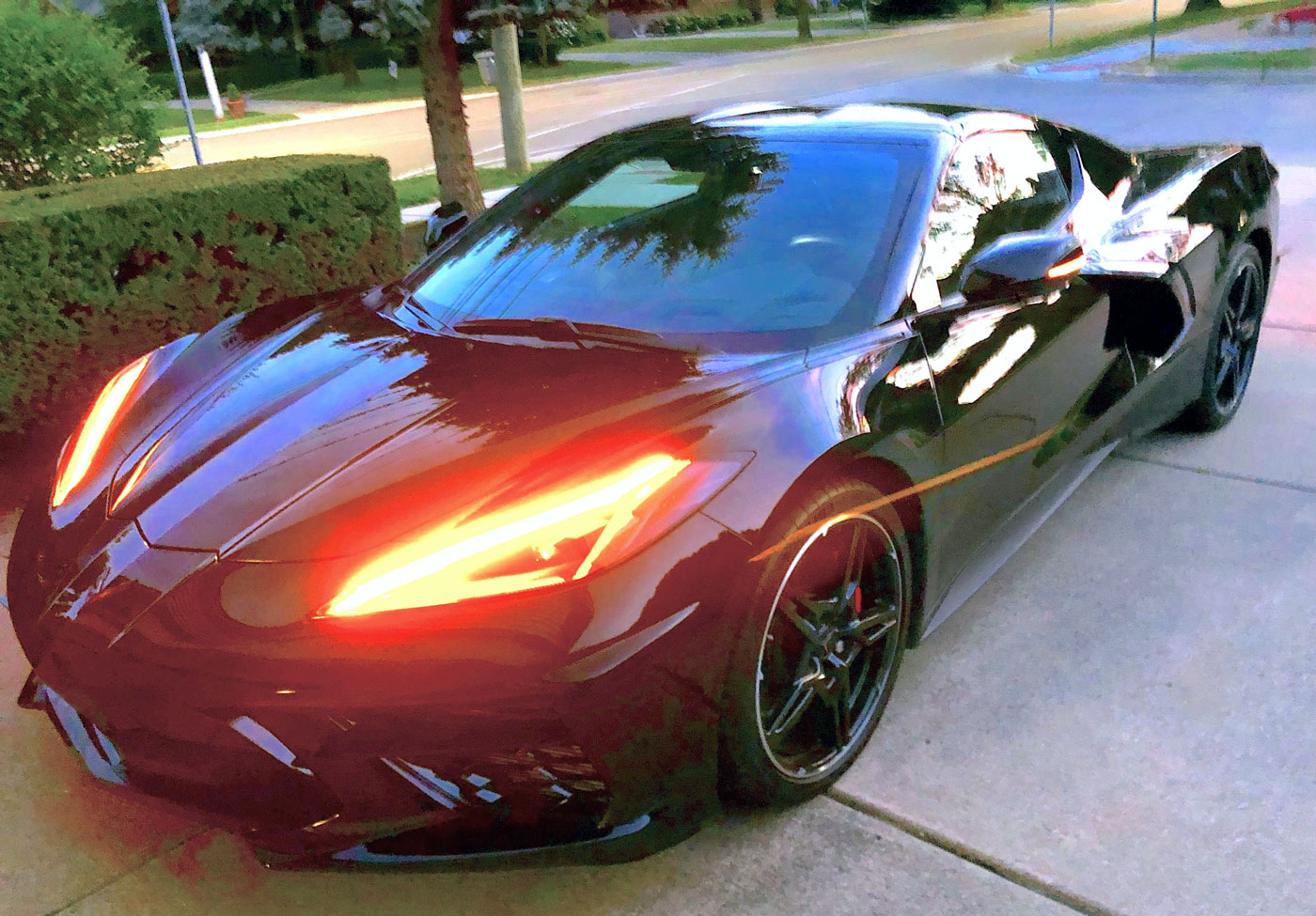
The 2020 C8 Corvette is a stunning design that attracts a great deal of attention. Yes…. It does look like a mid-engine car!
CONCLUSION
The Mangusta driving experience is unique. Any car that old also has technical and mechanical deficiencies compared to modern cars. A trip on the freeway at 7:30 in the morning brings them out. Brakes are a little slow to respond compared to new cars and because it is so small in a world of pickup trucks and SUVs it can be frightening to drive in that environment. The car is very low and often people do not see it. They look over it so a freeway trip at that time is to be avoided. The Corvette is up to date, maybe beyond, and it is significantly taller and longer. You feel very relaxed and safe in the car in spite of its size. Multiple cameras front and rear aid your driving vision as well as assisting you in parking. A GPS signal will lift the car over high spots when required and you have 1000 possibilities available. Pushing the gas pedal past more than one quarter way down is not often required. You get lulled into a mood of driving easily and safely with very little throttle. I had to look for a special place to floor my C7 and, as with this car, the comfort and relaxed cruising conceals a 490 horsepower beast that can really scare you. You must be sure that the steering wheel is straight or you will literally be in the weeds before you can react. The Mangusta was to be a racecar for the street as declared by de Tomaso in the owners manual. The Corvette is a street car that you can race. All you need are racing tires; everything else required is already engineered into the C8 for success. Simply turn a knob for an optimally designed performance software program called “Track”.
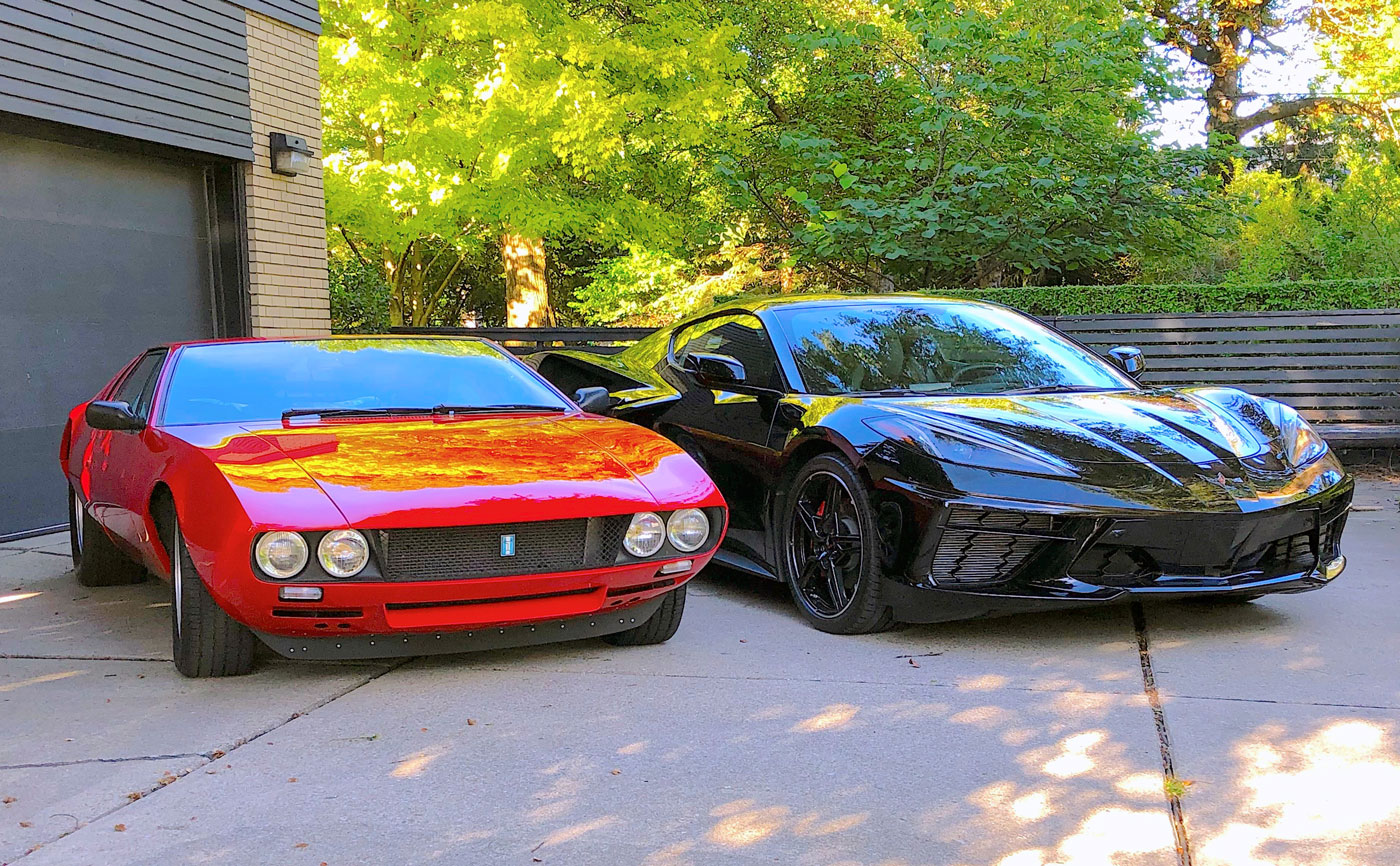
Built fifty years apart, the Mangusta and the C8 Corvette stand as examples of long-lasting automotive design and engineering benchmarks.
The Corvette Development Team is closely linked to the Corvette Race Team. They are some of the most talented, accomplished and admired people at General Motors, and rightly so. The C8 Corvette Stingray has a great heritage and a great future and those enthusiasts who buy one will enjoy it immensely.
______________________________________________
At a recent car event, while getting out of my black C8 a small crowd gathered to look it over. I was quickly asked, “Is it worth the money”?
Spontaneously, my words just tumbled out;
“Twice the money”! I replied, without even thinking.
My Mangusta was more than worth the money too.
Opshots, C8 Corvette
Buy Dick Ruzzin’s Tribute to the Mangusta. bellamangustadesign.com
Softcover
$24.99
Hardcover
$34.99
EBook
$3.9Softcover

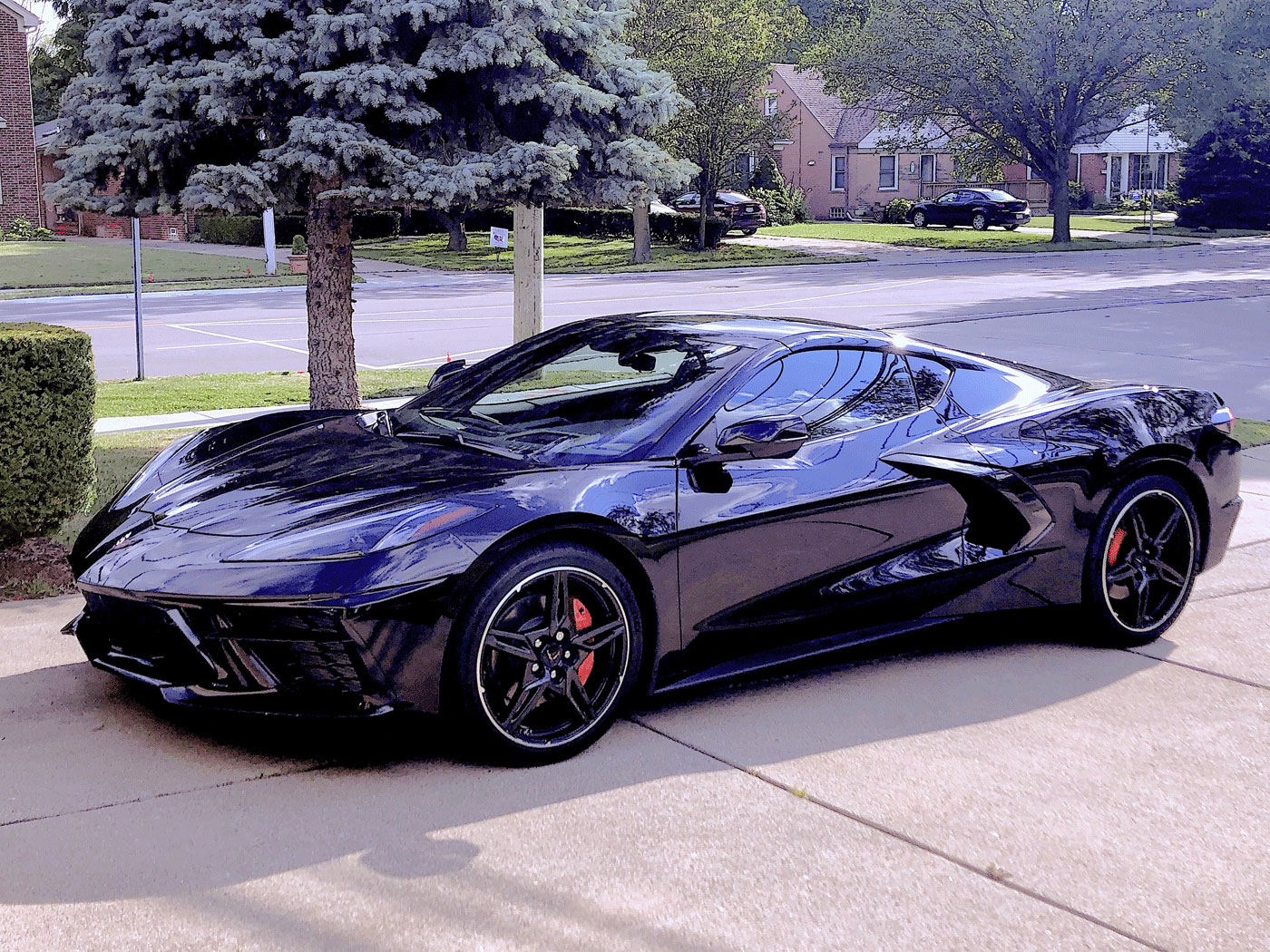
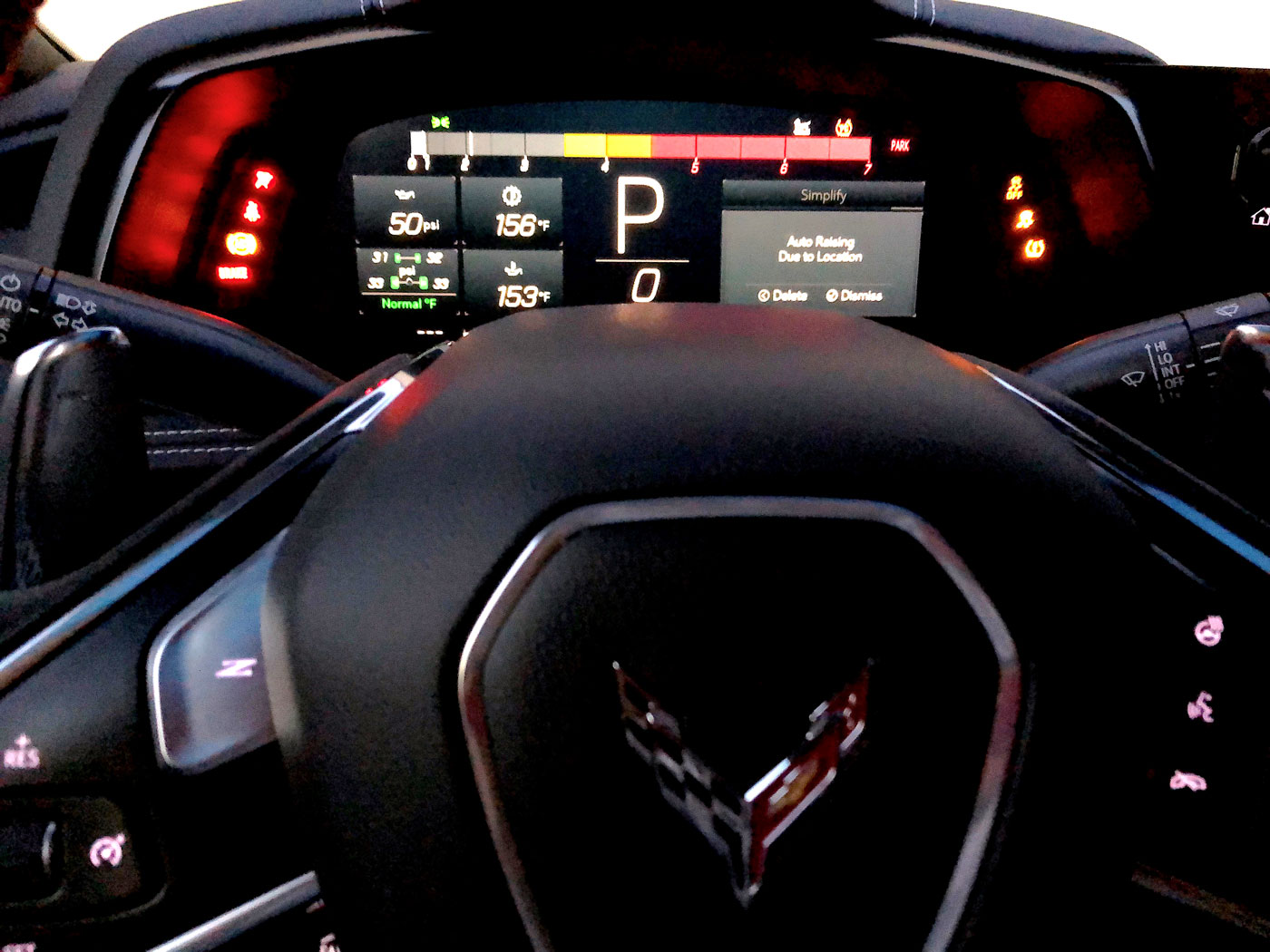
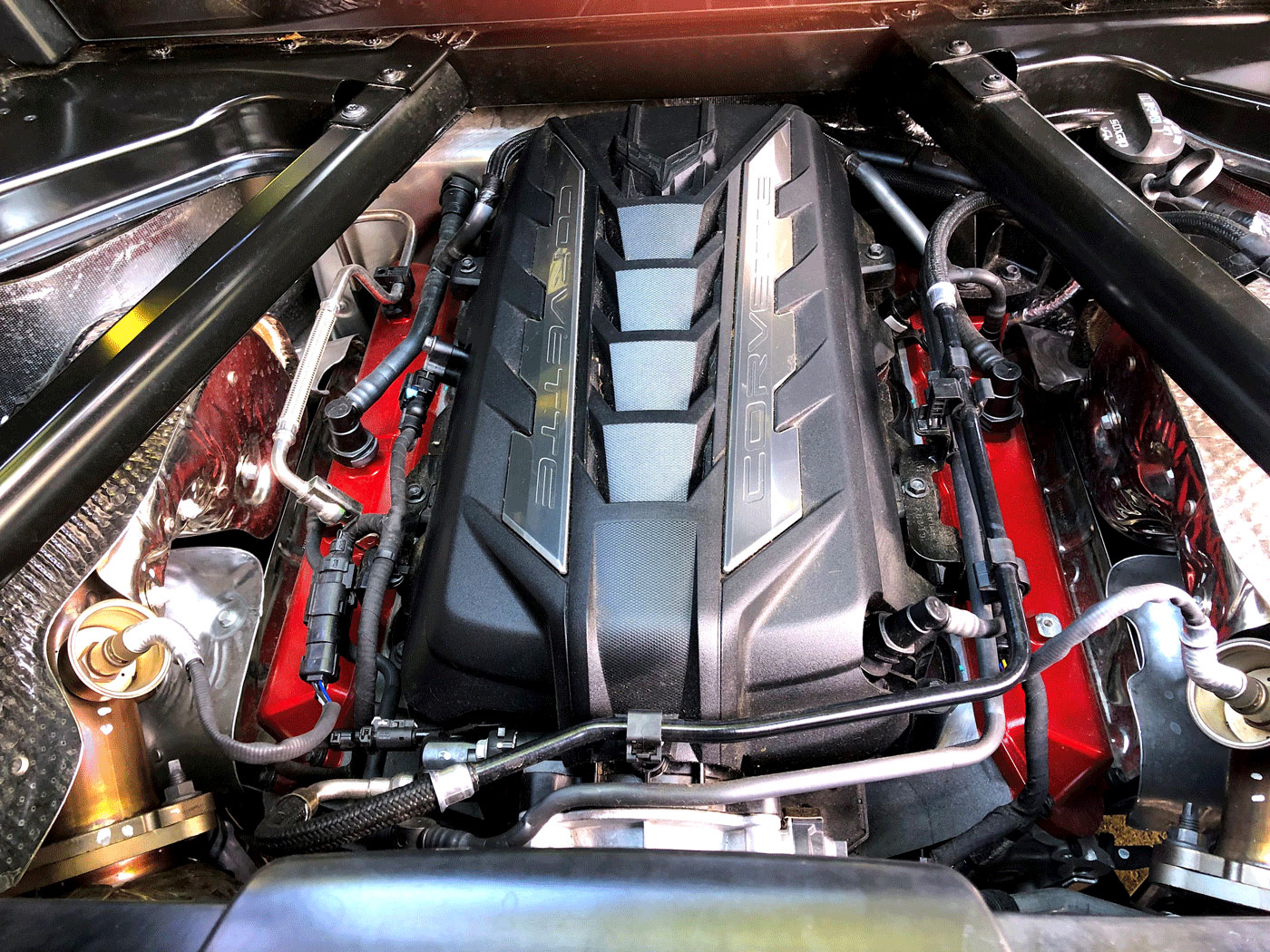
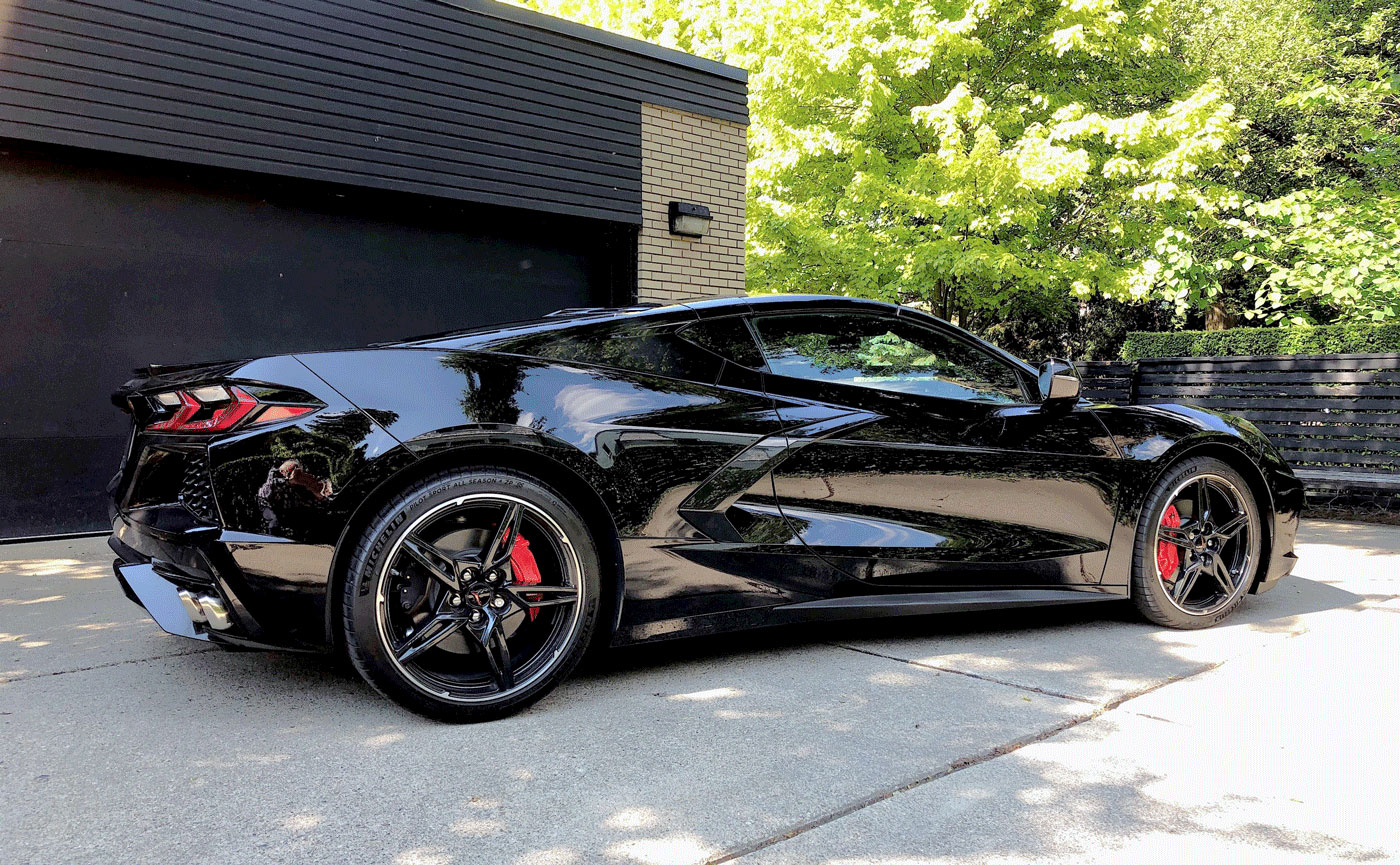

The Mangusta is the most important car De Tomaso has ever made.It’s also the most valuable vintage car in their stable.The new version which has a new name is also a super car.
Thanks. Both cars are marvels of their times, and mid-engine desirabilty.
Not here, but worthy to note were both of the 1970s era mid-engined other marvels: the Bora 4cam 5litre 330hp 171 mph GT luxury touring Maserati (Giugiaro/ Alfieri), and the sportscar Pantera (de Tomaso/ Ford).
C8’s (fifty years or so on) are a worthy marvel of today and tomorrow that I look forward to enjoying, but still the Bora open road beckons. And the many smiles linger.
Press on!
Another great article, Dick. The Vette is a better car in nearly every way, except for overall shape and proportions. And if ultimate aero is considered, the Vette wins overall shape, as well.
I’m waiting for the Z06 with DOHC and flat-plane crank. I want that car in spyder form, if available. Another couple years – I can wait!
we sold 3 new mangustas in ’70 that I personally spec’d out at the factory. I think one customer cut off half the front brake pads as in the rain the fronts lock up immediately on medium braking. I had the wonderful sampler of leather colors and paint colors but they got lost in a 10-mile move. they got about 30mpg at 70mph, and had what I’m wondering was a deliberate rev limiter: at a bit over 5k on the tach the ignition points would float! everyone who got in immediately remarked on how close the driver’s sun visor was to their foreheads. ours were pale blue, pale green, and black metallic, all with pigskin interior as I remember. beautiful cars.
I`m afraid I`m left cold by the C8 Corvette. It looks typical of most modern cars, especially from Asia and USA with exaggerated styling and proportions way too big in width and length to be attractive and timeless. The interior looks like an amusement arcade and with lots of needless gadgetry but I guess to the market that the Corvette is aimed at its probably right on. I very much doubt it though that it will succeed outside of North America. The other thing I wonder about and it is not unique to the Corvette by any means is why produce cars with way way too much performance that really cannot be used almost anywhere on the planet because of either road congestion, or legislation.
I bet the way the Corvette will be used in real life despite all the gadgets it has it lacks the most likely useful and needed one, an in car toilet. That`s the real world and real market.
cars are like paintings/sculptures/etc : the most beautiful we’re already made a long time ago
Looking around at the aggregate automotive offerings today tells you that we are in an evolutionary design period where complexity of theme, form language and graphics are used universally to brand the boxes that we call pick-up trucks and SUVs. People think they all look the same so the fight is on for individual identity. The fight has resulted in a design language across the global industry that is complex with very few exceptions. The Corvette has to live in that world and find it’s own identity in relation to it’s peers. It may not please everyone but it pleases very well those who aspire to it.
The proportion of the C8 as well as it’s volume is completely dictated by the size and location of the mechanical components and required storage which is exceptional. Since the car is so light compared to it’s competitors the Corvette engineers certainly struggled with every single ounce. Included in the choice to use a cast aluminum frame is the ability to substitute componants to eventually result in four wheel drive and a model that would be electric.
The Corvette designers had to put the car way out there. It had to appear to belong on the same playing field as Ferrari, Lamborghini and Mclaren and it also had to have it’s own identity that connected to it’s visual heritage despite the idealistic proportions that all midengine cars share. That end has been achieved and with superb surface execution by the Corvette design team.
For a shape so radical, started by the C7, the C8 is very well liked and apparently an outstanding sales success that will go on well into the future. No Corvette that I have driven in the last twenty years has received so much positive reaction to the design. Younger people like the C8 very much as their historical referance points are closer than older people and they are not aware of the simpler design statements of the far past.
The ever increasing level of performance by supercars can only be used in a few places. It is a measure of achievement like many other products that have a high capability where only a small portion of it is used like the iPhone, the Smart Watch and Tesla cars.
The interior design theme and execution is brilliant, simple and elegant it has embodied breakthrough technology that help achieve that end, specifically the HVAC outlets that are the thinnest in automotive history and almost invisible. It is comfortable, informative and a superb driving platform.
Is the C8 design complex? Yes it is and people love it!
MARIO,
A very good observation. In the early days a designer did the whole car whether he was capable or not. If he was allowed to continue then he would start developing his aesthetic skills, as a painter or sculptor does. If he was a really good artist he would eventually do cars that had his aesthetic character, again like a painter or sculptor.
Giorgetto Giugiaro who is an excellent painter from an artistic family, had done a lot of cars before he designed the Mangusta on his kitchen table at home. Many were very good ones st Stile Bertone. There he matured as an artist and as a designer so that by the time he got to the Mangusta he was very skilled and also had gained a lot of practical mechanical, body development and aerodynamic knowledge.
But his greatest skill was the aesthetic, and he evolved his aesthetic skills one car after the other. Interestingly he had done the Alfa Romeo Kangaroo two years before the Mangusta. Another race car for the street it was in every way the exact opposite of the Mangusta. It was rear wheel drive with a small four cylinder engine and it was the ultimate round car, a small and beautiful vision from the past. The Mangusta, with a midengine V8 engine, has sheer surfaces and sharp peaks and the body shape was a shock to the automobile design profession. It predicted the future as every designer in the world was influenced by the Mangusta design. It was midengine but noone cared, it was the way that it looked that was important.